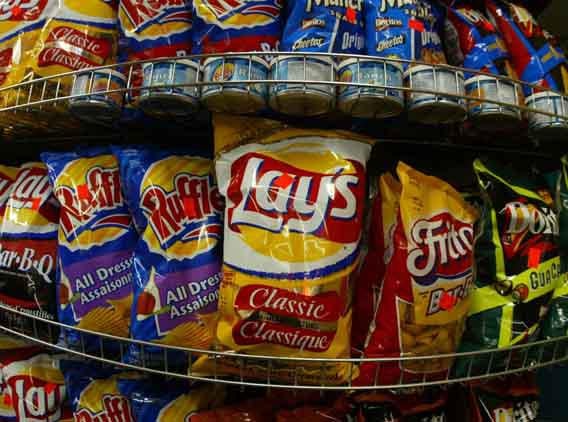The Institute of Medicine concluded this week that there is no reason for people to keep their sodium consumption below 1,500 milligrams per day, as had been previously recommended for most adults. The panel’s approved level of 2,300 milligrams per day, however, is still far below the average of 3,400 milligrams of sodium that Americans consume per person per day, much of it from processed foods. Why do processed foods have so much salt?
Because salt tastes great. Salt is often lumped together with fat and sugar, two other ingredients that humans find irresistible. (Michael Moss’ recent best-seller, Salt Sugar Fat: How the Food Giants Hooked Us, has an excellent discussion of the power of salt.) But one of those things is clearly not like the others. Sugar and fat are indicators of high caloric content, something that would have helped our ancestors survive. Salt is required only in small amounts, so it’s not entirely clear why we love it so much, or why we love so much of it. But we clearly do. Young people love salt. Old people love salt even more. Infants crave salt. It’s not surprising that food manufacturers pile salt into their products.
Commercial food-makers, indisputably, use more salt than we do at home. Almost all of the top sources of sodium in the American diet—including meat pizza, white bread, cheese, hot dogs, ham, ketchup, white rolls, and flour tortillas—come from foods typically purchased in prepared form. There are several possible explanations for this. After years of nagging from public health experts, home cooks may hold back on salt for dietary reasons. Some commentators believe that packaged foods have higher salt content because they are otherwise bland, perhaps due to a lack of freshness. That’s possible, but the Explainer is skeptical. There’s little evidence that salt-free processed foods would be otherwise flavorless, and, besides, restaurants that use fresh foods also salt their foods well above home-cooking levels.
The more likely explanation is the quasi-addictive effect of high salt consumption. Food sellers don’t just want you to like their products, they want you to crave them in increasing quantities. The more salt a person eats, the more salt he or she wants. In 2011 researchers at Philadelphia’s Monell Chemical Senses Center, the source of many salt consumption studies, found that babies who eat salty, starchy foods almost immediately begin to crave salt at higher levels than their salt-naive peers. There are even indications from rodent studies that a mother’s salt intake, transmitted to her baby in her breast milk, can affect its salt cravings later in life. Perhaps even more importantly for the processed food industry, people who lower their sodium intake for just two to three months experience a measurable decrease in salt cravings. (Jonathan Swift was aware of this effect: After a prolonged period of salt deprivation, the main character in Gulliver’s Travels becomes convinced that salty foods are merely a way to sell alcohol.)
In 1937 Irish-born physician Robert Alexander McCance convinced several colleagues to join him on a salt fast and to further reduce their internal sodium levels with heavy exercise and sweating. After several days, they had very little appetite and their experience of flavor completely changed. McCance claimed that rinsing his mouth with sodium restored the taste of food, suggesting that salt is an important contributor to our interest in any foods, not just those with high salt levels.
Got a question about today’s news? Ask the Explainer.
